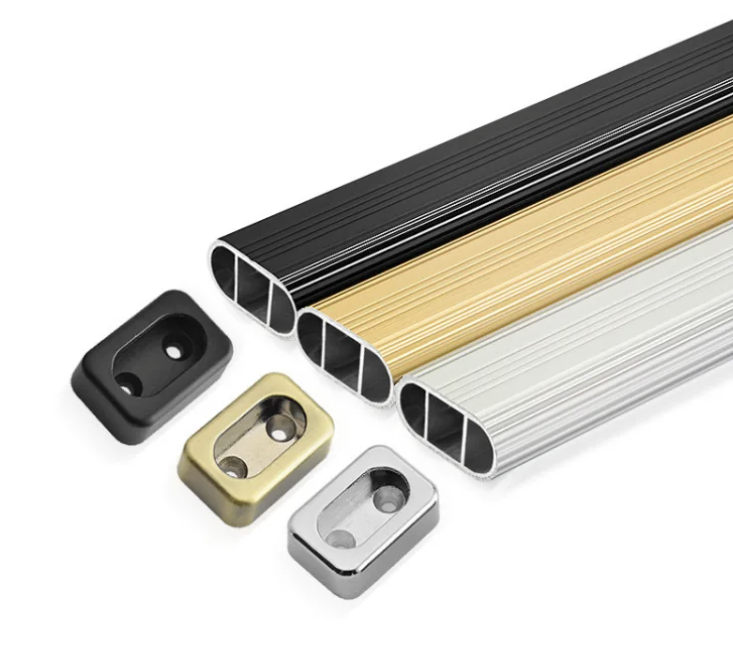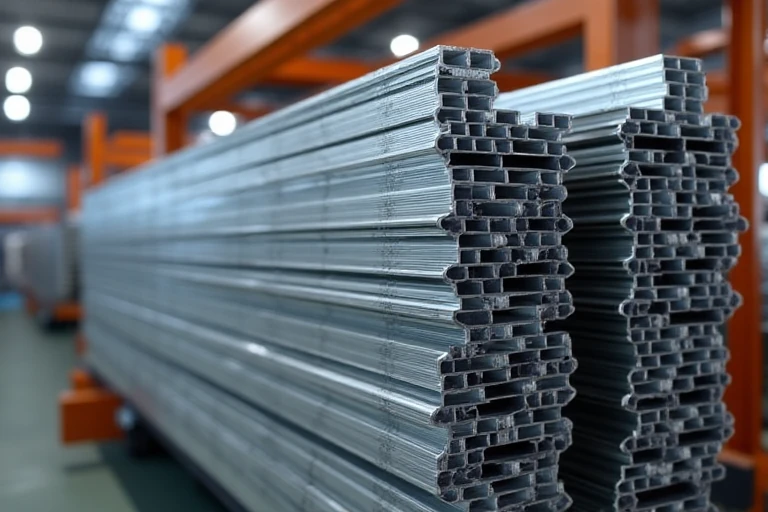Aluminum vs Stainless Steel Closet Rods: A Complete Comparison Guide

Closet rods are essential for organizing clothes and ensuring they remain accessible and neat. Aluminum and stainless steel are two widely used materials for closet rods, but each has distinct advantages and disadvantages. This guide compares these materials to help you choose the right one for your needs.
Aluminum Clothesline Rods
Aluminum closet rods are lightweight and affordable, making them easy to install and handle. Their smaller size allows flexible placement in closets or compact indoor spaces, offering a practical solution for homeowners with limited storage areas.
However, aluminum rods have some drawbacks. Their painted surface can fade or peel over time, reducing visual appeal. Additionally, aluminum rods have a lower load-bearing capacity compared to stainless steel. They may bend, loosen, or deform when holding heavier garments or large quantities of clothes. This makes them less suitable for environments requiring high durability or strength.
For light-duty use and budget-conscious buyers, aluminum clothesline rods provide a convenient and cost-effective option. However, they may not meet the demands of heavy loads or long-term reliability.
What is a Stainless Steel Clothes Rod?
A stainless steel clothes rod is a durable hanging solution made from 304-grade stainless steel. This material is known for its strength and resistance to rust and corrosion, making it ideal for use in humid or damp environments.
Stainless steel rods are heavier and stronger than aluminum rods, allowing them to support heavy garments, such as coats, or multiple items, without bending or warping. The corrosion-resistant properties of the 304-grade alloy ensure long-term reliability, even in areas with high moisture or salty air.
Stainless steel clothes rods are commonly used in homes and commercial spaces. In residential settings, they are perfect for closets or wardrobes that require sturdy support for heavy clothing. In commercial environments like retail stores or laundry facilities, their durability makes them ideal for high-capacity use.
Benefits of Stainless Steel Clothes Rods
Stainless steel clothes rods are durable and resistant to rust, abrasion, and high temperatures. These qualities make them suitable for humid or outdoor spaces, such as balconies, where moisture or acidic air can damage other materials. Unlike aluminum rods, stainless steel maintains its strength and appearance over time, even in harsh conditions.
These rods offer excellent load-bearing capacity. They can hold heavy garments like coats or a large number of clothes without bending. This makes them ideal for families or commercial use in spaces that require reliable support for heavier loads.
Stainless steel rods are more expensive than aluminum options due to their superior material properties. They are also heavier, which can make installation more challenging. However, their long lifespan and resistance to wear often outweigh these drawbacks, providing a dependable solution for both residential and commercial use.
Aluminum Closet Rod vs Stainless Steel Closet Rod
Aluminum and stainless steel closet rods differ in strength, durability, and suitability for various uses. The table below highlights their key physical properties to help you compare them effectively.
Characteristics Comparison
| Property | Stainless Steel Clothes Rod (304) | Aluminum Clothes Rod (6063 Alloy) |
|---|---|---|
| Hardness | ≤200HV (Vickers hardness) | ~85HB (Brinell hardness) |
| Service Life | At least 10 years | At least 5 years |
| Yield Strength | σ0.2 ≥ 205MPa | 190-215MPa |
| Tensile Strength | σb ≥ 520MPa | ≤130MPa (19,000psi); 6063-T5: ≥140MPa (20,000psi) |
Key Differences
Stainless steel rods are harder and stronger than aluminum rods. With a Vickers hardness of up to 200HV and tensile strength of at least 520MPa, they can handle heavy loads without bending or deforming. This makes them ideal for long-term use in demanding conditions, such as outdoor areas or humid environments.
Aluminum rods are lighter and easier to install. Their tensile strength, which typically does not exceed 130MPa, limits their ability to support heavy garments or large quantities of clothes. However, their lightweight design is suitable for indoor spaces where lighter loads are expected.
Stainless steel rods last longer, with a service life of at least 10 years compared to aluminum’s approximate lifespan of 5 years. This durability makes stainless steel a better choice for applications requiring long-term reliability.
Choosing the Right Option
Choose stainless steel rods for heavy-duty use or environments exposed to moisture and wear. Opt for aluminum rods if you prioritize affordability, ease of installation, and lightweight design for lighter loads.
Final Thoughts
Stainless steel clothes rods are strong, corrosion-resistant, and long-lasting. They are ideal for heavy loads and humid environments, such as balconies or laundry rooms. However, their higher price may be a consideration for budget-conscious buyers.
Aluminum clothes rods are lightweight, affordable, and easy to install. They work well for lighter clothing loads and indoor spaces like closets. While they resist fading and discoloration, their lower load-bearing capacity makes them less suitable for heavier garments or large quantities of clothes.
When choosing between the two, consider your specific needs. For durability and strength in challenging conditions, stainless steel is the better option. For affordability and convenience in lighter-use scenarios, aluminum is a practical choice. Carefully evaluate your space and requirements to select the material that best suits your needs.







